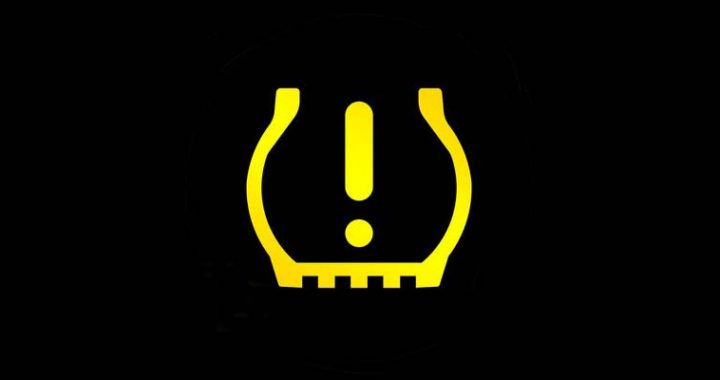
The tires of your car require the correct pressure to operate. As you maintain the right pressure, your tires will serve you for long. On the same note, it increases fuel efficiency.
Fortunately, there are modern pressure monitoring systems to help the driver informed. The user will instantly know the air pressure condition in the tires. However, the system may fail and send wrong signals to you.
Typically, a Tire Pressure Monitoring System (TPMS) will illuminate. It happens should the tire pressure drop. It will precisely light up if the pressure drops 25% below the required value. In our case, the TPMS may be issuing false signals. What can you do?
Reasons behind Low Tire Pressure Light but Tires are fine

There are some situations whereby the tires are not underinflated or flat. Unluckily, the TPMS light is ON at your dashboard. The following may be possible reasons:
1. Faulty TPMS tool

Tire 001
Whenever you start your vehicle, the pressure light may turn ON permanently. In such a scenario, it is an indicator that the TPMS tool is malfunctioning. You can check the condition of the tire before consulting your mechanic.
As you confirm that the tire pressure is normal, then repair the TPMS tool.
2. Extreme Cold Weather

The tire pressure will usually go down during cold weather. It happens even if you correctly inflated it. Matters often compress in the cold while expanding in heat. So, if you are driving in cold weather, the condition disappears when tires are warm.
As you warm the tires and nothing changes, measure the pressure in your tires. If it is okay, then the cold temperatures might be the cause.
3. Recent Tire Replacement

For the TPMS tool to work efficiently, it must be on the tire’s rims. If there is a tire change process, the TPMS can get damaged. It is vital to check the pressure light as you change your tire.
Other valid reasons may be as follows:
- The batteries that power TPMS sensors have a lifespan of 6 to 10 years. If they become weak, then a signal interruption will occur. Such a situation will cause the low-pressure warning lights to illuminate.
- A damage may occur when a substance such as a tire sealant gets into the tire. As a result, it can likely destroy the TPMS sensors. The defective sensor will automatically fail to relay signals on the dashboard.
- TPMS are electronic components. If they experience an internal fault or a short circuit, the signal will fail. It will not communicate with the dashboard. As a result, the low-pressure light will turn on.
- The spare tire might have low pressure. Do you know that some spare tires may have a pressure sensor? It is normal to forget to evaluate the pressure of the spare tire. It happens when you are adjusting the pressure of active tires.
How to check a Faulty Tire Pressure Monitoring System

You can perform the following actions to diagnose a fault. In our case, the TPMS light is ON, but tires are fine.
a) You can reset the system as you observe what happens.
b) Check the damaged sensors, if any, and replace them.
You should always confirm the problem by performing the following actions.
First Step
- Start the car as you perform a short drive. In standard cases, the warning light should turn ON for a few seconds. After that, the same lights should go off.
- Suppose the warning lights remain permanently ON, drive to the nearest gas station. Alternatively, go to the tire shop and determine the air pressure.
- If your tire pressure is below 25 % of the recommended pressure, the lights will illuminate. Cold weather may compromise the tire pressure. As you take a short drive, the tires may heat up and restore the pressure.
- Suppose you end the above step and nothing happens, proceed to step two.
Step two
Here, you may reset the TPMS by performing the following steps.
- Turn the key ON without starting the engine.
- Proceed by pressing and holding the TPMS reset button. Wait for three seconds and release. Instantly, the system will begin to beep and eventually turn the warning lights OFF.
- You may start the engine as you drive your car at 19mph for half an hour. You can prolong for one hour to end the reset procedure.
- If the warning lights are stubbornly ON, replace sensors of the TPMS. You can drive to an appropriate dealership shop for further action.
It is important to note that resetting the TPMS should come as a last resort. Do not do it as a habit every time the waning light comes ON.
Since technology is changing at a fast rate, new models of TPMS are likely to emerge. The best practice is to check the tire pressure before you start your car. You can perform a physical inspection while determining the tire pressure.
As a driver, you should purchase a small tire pressure gauge. The tool is useful in determining the actual tire pressure. You can physically determine the pressure condition of your tire. Alternatively, engage your TPMS tool.
Maintenance Tips?
Do you know that tires are the only car parts that touch the ground? If you overinflate or underinflate the tire, the repercussions are worse.
You should avoid driving using overinflated tires. It may lead to some consequences like premature tire wear. Also, as a driver, you may experience a stiff ride as well as funky handling. The TMPS will not illuminate if you are using overinflated tires.
Concerning that, you can travel over a long distance using overinflated tires. Consequently, it may cause some significant wear and tear without your realization.
If you drive on underinflated tires, it may lead to tire failure. Operating on a tire that has low pressure is challenging. The tire will roll with a large surface area. The situation may affect the vehicle’s performance by a great deal.
Plus, the rate of friction will increase. As a result, it will prompt too much heat within your tire. Excess heat will automatically cause premature tire wear. Still, the heat may cause tread separation.
Driving of underinflated tires is only beneficial in some cases. It may be so while riding on sand, loose gravel, ice, or snow. The situation is opposite on a smooth road. You need to operate on the correct tire pressure to promote comfort and safety.
Your vehicle needs a TPMS tool to simplify your work. However, you need to know what it takes to keep the machine ever sound. Always consult the manual as you use this tool. If you discover a technical aspect that is challenging, seek the mechanic’s advice.
You can also follow the maintenance tips, as captured below.
- Let your tires get serviced or installed at a reputable dealer. By using experts, they have a thorough knowledge of mounting and replacing wheels. They will carefully maintain the wheels without damaging the TPMS.
- It is vital to replace any worn, old, and damaged tires instantly. It is a safety measure to do so. Road rules do not allow anyone to use a vehicle with poor tire conditions. You may be liable for a fine, depending on the locality.
- As a routine practice, always evaluate the pressure in your tires. On the other hand, you should inflate your tire correctly before you reset the TPMS light.
- Some actions need the services of an expert or a dealer fully. It may be replacing the OEM wheels. You can do replace them with larger aftermarket wheels. Notably, the exercise is usually hectic as it affects the factory settings of the TPMS.
- Ensuring that the car uses the recommended tire pressure. Make sure you check it after a week or monthly.
- Check the tread depths. Proper treading will enhance grip to enable the vehicle to move appropriately.
- You should rotate the tire for every 6000 to 8000 miles.
- Check the tire alignment or suspension for every 4350 miles. Such will prevent irregular wearing of tires.
- Perform attire balancing every time you replace a new set of tires. Remember, you will require a professional to perform tire balancing.
In Conclusion
It can be a frustrating encounter if you observe some false warning signals. The whole experience will distract your peace a driver. Facing a low tire pressure light but tires are fine is not a new scenario.
As a driver, you should take the right steps to overcome the condition. This write-up has come up with the right tips to follow. If you fully exhaust and implement them, indeed, you can succeed. Some aspects may need the attention of an expert.
Implementing proper tire maintenance tips will put your vehicle in the correct form. You should routinely perform them to avoid future regrets. By doing so, you will be fit to drive your car to your destination safely.
Finally, your car is in good condition. You can use it properly to serve you to your place of interest.








